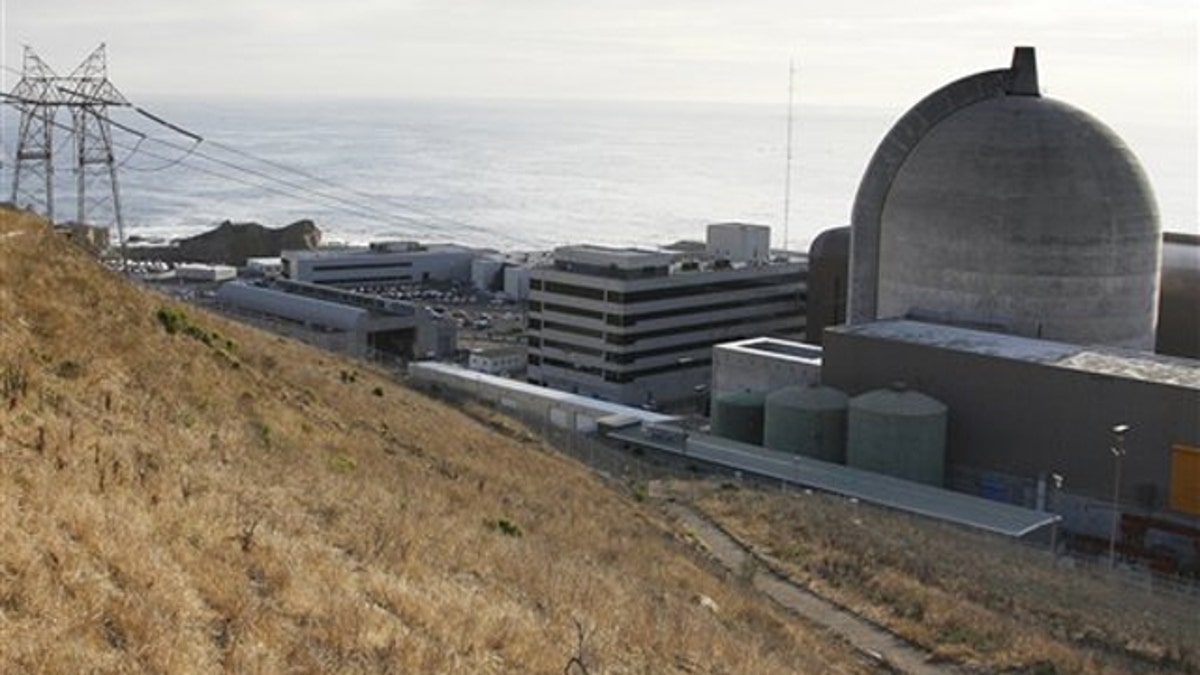
This Nov. 3, 2008, file photo shows one of Pacific Gas and Electric's Diablo Canyon Power Plant's nuclear reactors in Avila Beach, Calif. (AP, File)
A top nuclear safety official said Monday that inspectors will soon fan out at reactors across the United States to ensure power plants are not susceptible to the kind of worst-case scenario that caused a nuclear emergency in Japan.
Bill Borchardt, director of operations for the U.S. Nuclear Regulatory Commission, told commissioners at a briefing that the "temporary inspection" program for the 104 reactors in the United States will help regulators figure out whether they need to approve any new rules to improve safety. He said he has a "high degree of confidence" in the safety of those plants but suggested the United States would look to learn lessons from the nuclear crisis in Japan, triggered by a massive earthquake and tsunami.
As part of the short-term inspections, Borchardt said officials will be looking at how nuclear plant operators are able to respond to "severe accidents." The scenarios are clearly modeled after what Japan has experienced. Inspectors will examine what plans are in place to operate after a "total loss" of electrical power; how operators plan to combat problems associated with flooding "inside and outside of the plant;" and how operators would respond to equipment losses due to "seismic events."
Borchardt said the NRC is working on a 90-day analysis to evaluate the Japanese crisis and determine how U.S. reactors are able to protect against natural disasters and other "severe" scenarios.
Though Japan's nuclear problems started after the combination of natural disasters knocked out power and disrupted the cooling mechanisms at its Fukushima Daiichi plant, Borchardt stressed that there is a rule in place in the United States requiring every plant to have an operation plan in case of a total power loss.
He also said the radiation from the Fukushima Daiichi plant should be no cause for concern to Americans.
"We feel confident in our conclusion that there is no reason for concern in the United States regarding radioactive releases from Japan," he said.
As U.S. officials determine whether any changes are needed in nuclear safety standards, Energy Secretary Stephen Chu said Sunday that one thing regulators will look at is whether nuclear reactors in the future should be constructed in less populous locations.
"Certainly where you site reactors and where we site reactors going forward will be different than where we might have sited them in the past, I would say," Chu told "Fox News Sunday." "Any time there is a serious accident, we have to learn from those accidents and go forward."
But the secretary said he's not going to judge whether current reactors should be shut down or taken offline. His remarks come as the Indian Point reactor 34 miles north of New York City is targeted for review -- not only for its evacuation plan but whether it should remain in service.
About 21 million people live within 50 miles of Indian Point.
"The Indian Point reactor is not in the situation like in Japan, but I think, again, we will be looking at whether those evacuation plans are adequate," Chu said. "I don't want to ... jump to some judgment about what we should do going forward."
Regulators and state officials plan to meet Tuesday regarding the Indian Point reactor.
According to Chu, the NRC does not consider Indian Point "unsafe," and it was not built using the same design as the Fukushima Daiichi plant in Japan. Radiation has been leaking in Japan for nearly a week, though the containment walls have been able to prevent or slow harmful output.
However, 23 reactors in the United States are similar to the Daiichi design. Chu said since they were built, upgrades in safety have been made -- a process that continues throughout the life of U.S. reactors.
Chu said the United States is also not going to take the same action as Germany, which last week called for shutting down seven of its oldest plants. He said the NRC is very deliberative in its reviews and looking at the life span of the reactors, and will decide whether any U.S. reactor needs to be updated or brought offline.
"They are a very prudent agency, and we'll see what they do," he said.
The NRC announced Monday that it had launched what it termed a "special inspection" of the Callaway nuclear plant in Missouri. That inspection, while not necessarily related to the events in Japan, was initiated to review whether a water supply pump was properly lubricated, after an oil sample was found to be discolored.
Though Borchardt said the systems in Japan seem "stable," smoke was seen rising from one of the reactors Monday, leading operators to evacuate workers trying to restore power and cool down the nuclear fuel.
In the process of trying to keep the temperatures down over the past week so the cores would not melt and release harmful levels of radiation into the air, facilities managers ordered seawater dumped onto the Fukushima Daiichi complex, which means that once the emergency is resolved, the facility will be abandoned.
"Once you use seawater, those reactors are not recoverable. But the most important thing was to keep those reactors cool, and that's the step they took," Chu said, noting that with each passing hour, "things are more under control."




